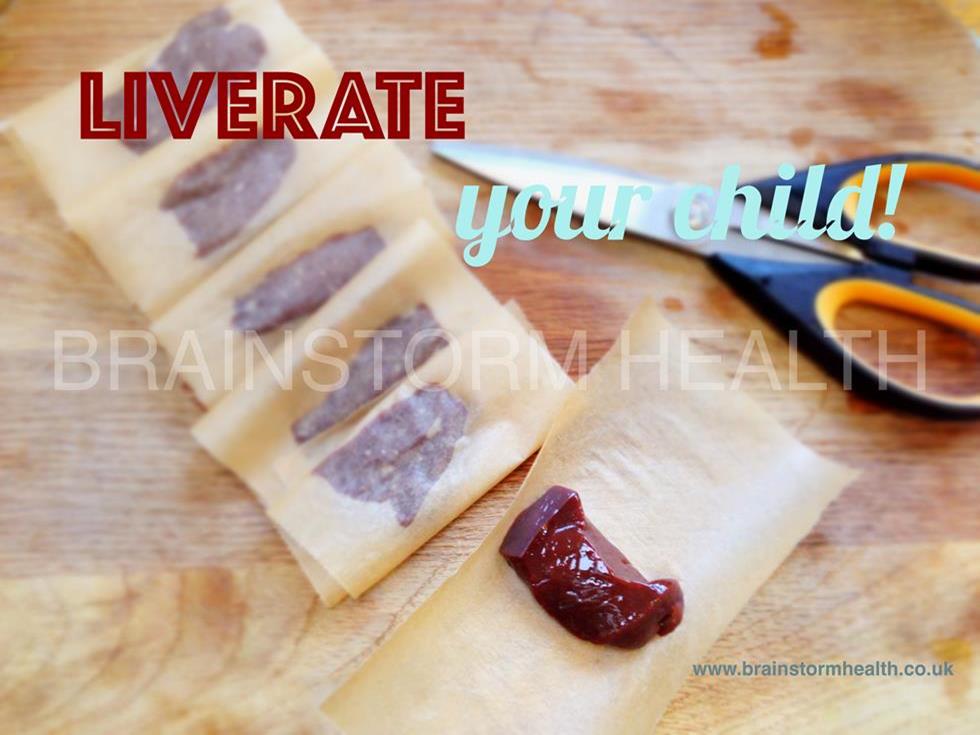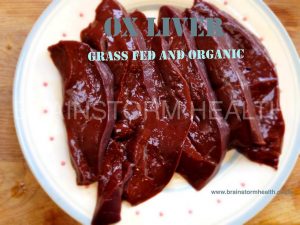LIVERATE YOUR CHILD!
Does your child look pale, with poor stamina, suffers from leaky gut and struggles to detoxify properly? if you have answered yes to any of those questions then consider giving your child raw liver, 2 to 3 times a week – this can be an absolute miracle food for them. Liver….what??? my child will never eat that! I can hear you say….bear with me and read on – you will be amazed at how this can be made into delicious and stunningly nutritious drinks and hidden easily in every day food.
HOW AM I GOING TO GET MY CHILD TO EAT LIVER?
Freeze the liver for 14 days in small chunks of about 15g (1 tablespoon). Keep frozen for Fourteen days to ensure the elimination of any potential pathogens. You can pop the frozen chunk of liver in a blender with some juice – pineapple juice work very well especially with a dash of beetroot juice as it masks the flavour really well and at the same time helps support the gallbladder and bile flow. You can also grate the frozen liver on the small holes of a grater and add it to a favourite drink, hot porridge, eggs, mashed vegetables, casseroles, pasta sauces and so on. If you are adding it to a hot dish just make sure you add it at the end of cooking to preserve all the nutrients.
Go on….give it a go and make a real difference to your child’s health.

Ingredients
- 1 cube frozen raw liver
- 150 ml pineapple juice
Instructions
- Blend the frozen liver with pineapple juice until smooth and serve!
Notes
THE SCIENCE BIT
THE HEALTH BENEFITS OF LIVER – Excellent source of high-quality protein – Nature’s most concentrated source of vitamin A – All the B vitamins in abundance, particularly vitamin B12 – One of the best sources of vitamin B9 (folate) – A highly usable form of iron – CoQ10, a nutrient that is especially important for mitochondrial function – our energy factories in our cells – Contains between 10 and 100 times more nutrients than a piece of steak or other red muscle meat In an animal study after just a few weeks on a liver diet, the stamina of the animals was up by an astounding 800%. ISN’T LIVER DANGEROUS TO EAT? There is a lot of misinformation out there about liver. One of the roles of the liver is to neutralize toxins (such as drugs, chemical agents and poisons); but the liver does not store toxins. Poisonous compounds that the body cannot neutralize and eliminate are likely to lodge in the fatty tissues and the nervous system. The liver is not a storage organ for toxins but it is a storage organ for many important nutrients such as vitamins A, D, E, K, B12 and folate, and minerals such as zinc and iron. These nutrients provide the body with some of the tools it needs to get rid of toxins. There are some concerns about fat-soluble vitamins such as vitamin A as it stores in the liver. The upper end of vitamin A recommendation for children between the ages of 4 and 8 is 3000iu per day. A small 15g piece (1 tablespoon) of ox liver provides 7,500 iu of vitamin A which is highly bioavailable and readily absorbed. Having a small piece of liver just 3 times a week can provide a whole weeks’ worth of therapeutic dose of vitamin A, as well as a host of other vitamins and minerals for your child . WHERE DO I BUY GOOD QUALITY LIVER? It is super important to buy good quality liver, from organic, grass fed and pasture raised animals. A 500g piece of liver from Eversfield Organics costs £2 and makes 32 portion – that’s 6 pence a portion for one of the highest quality ox livers money can buy.



